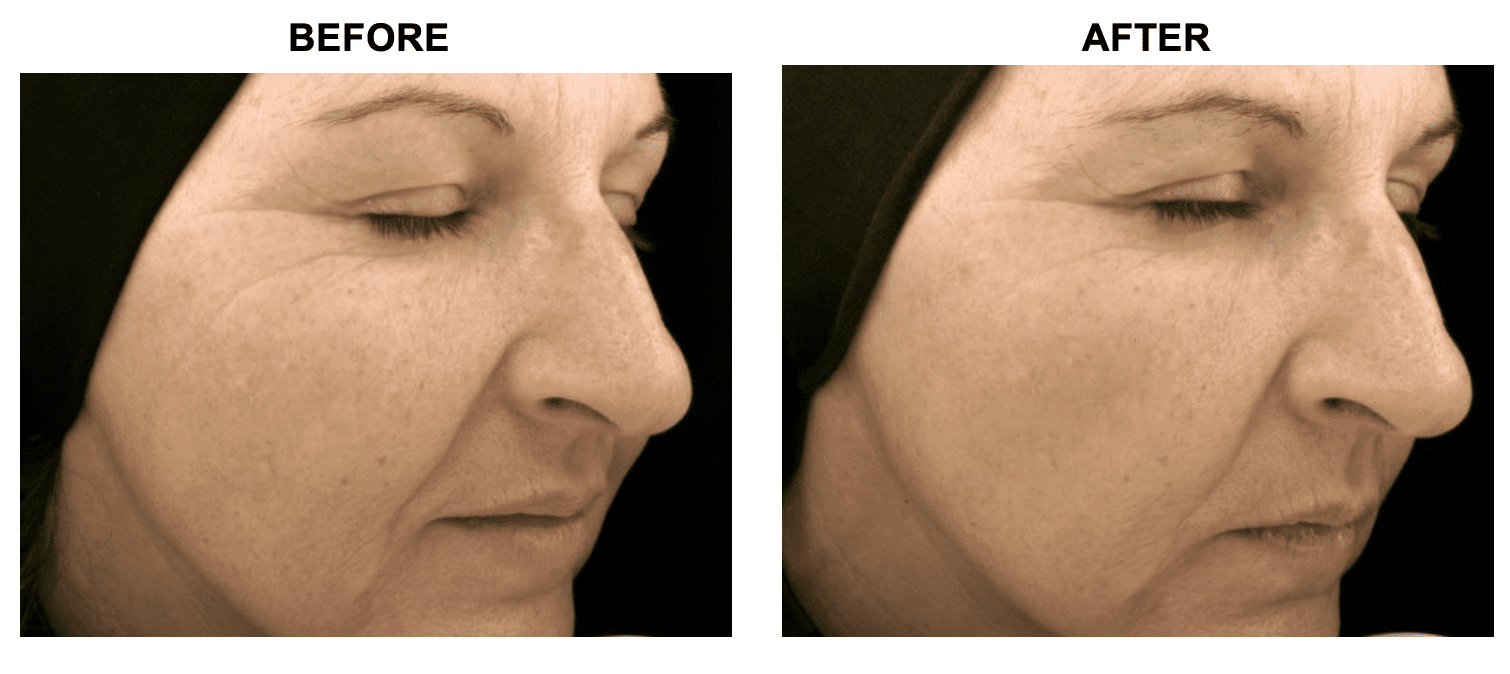Why Skin Needs Moisture
No matter your skin type, moisturizer is an excellent product to incorporate into your daily skincare routine as it can keep your skin hydrated and refreshed. As we age, the oil glands that keep our skin healthy lose their power, which causes them to create less oil. Moisturizing daily helps the glands to not have to work as hard to keep your skin feeling and looking its best. In this blog, we’ll discuss the skin’s lipid barrier, transepidermal water loss (TEWL), the difference between hydration and moisture, dry vs. dehydrated skin, and the reasons why your skin needs moisture.
What’s Your Skin’s Lipid Barrier?
Your skin is made up of layers with each one performing important functions in protecting your body. The outermost layer, known as the stratum corneum, is often described as a brick wall.1 It consists of tough skin cells called corneocytes that are bound together by mortar-like lipids. This is your skin barrier.2 Inside the skin cells, or “bricks,” you’ll find keratin and natural moisturizers.
The lipid layer contains:
- Cholesterol
- Fatty Acids
- Ceramides
Without your skin’s lipid barrier, various harmful environmental toxins and pathogens could penetrate your skin and cause adverse effects inside your body.3 Additionally, if you didn’t have a skin barrier, the water inside your body would escape and evaporate, leaving you completely dehydrated.4
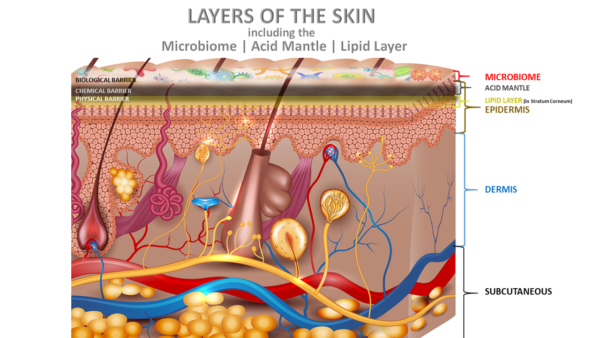
Pictured: Layers of the Skin Source: Dermascope
A Brief Dive Into Transepidermal Water Loss (TEWL)
To understand TEWL, let’s revisit the layers of your skin. Your skin is comprised of three primary layers. The outermost layer is known as the epidermis, which is what you see in the mirror. The dermis is the middle layer, while the hypodermis is the innermost layer. TEWL occurs when water passes from the dermis through the epidermis and evaporates through the skin barrier.5
Dermatologist Anna Guanche mentions, “The skin barrier consists of the epidermis and, most specifically, the hard, outermost layer of the stratum corneum. The epidermis is what we typically think of as the outer layer of the skin, but it’s made up of five layers. The outermost layer of the epidermis is the stratum corneum.”
When the stratum corneum is compromised, moisture evaporates through the ineffective skin barrier, and you may see very dry, dull or dehydrated skin. Your skin is typically wise enough to regulate water loss and retain hydration on its own, but sometimes certain factors damage your skin barrier’s function, exacerbating dryness.6
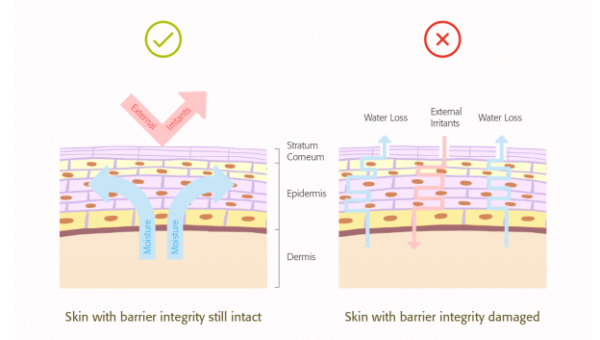
Pictured: Skin with barrier still intact vs. Skin with barrier integrity damaged Source: Eminence
Here are four signs that you may be experiencing TEWL:
- Irritation
- Flaking
- Itchiness
- Tightness
The Difference Between Hydration and Moisture
A simple way to differentiate these terms is to remember that hydration refers to water while moisture refers to oil.7 However, it’s crucial to first understand the difference between a humectant, emollient, and a sealant, along with why they are used in various beauty and skincare products.8
Board-certified dermatologist Annie Gonzalez says, “Humectants, which hydrate the skin, pull water into the skin from within the body or the environment. Emollients moisturize the skin by filling in the gaps between skin cells and replacing missing lipids to fortify the skin. Sealants, which moisturize the skin, seal in water and help shore up the skin’s barrier functions.”
Humectants
Humectants are water-loving ingredients that work by attracting water molecules from either the environment or from deeper within the body, ultimately adding more water content to the skin. Our skin naturally makes humectants, as well. These are called natural moisture factors (or NMFs), and they include things like lactic acid and urea.9
Powerful humectants include:
- Glycerin
- Hyaluronic Acid
- Glycols
Emollients
Emollients are lighter oil-based substances that work by covering the skin with a protective film to trap in moisture. Emollients are often used to help manage dry, itchy, or scaly skin conditions such as eczema, psoriasis, and ichthyosis.10
More specific examples of emollients include:
- Jojoba oil
- Squalane
- Cocoa Butter
Sealants
The skin’s natural barrier acts as a shield for the skin, keeping vitamins and nutrients in and keeping toxins, pollutants, and other environmental aggressors out. Sealants add to the skin’s natural barrier by protecting the skin, preventing TEWL, and sealing in moisture.11
In general, sealants are heavier, waxy substances, which include:
- Lanolin
- Petroleum Jelly
- Heavier Silicones
Dry vs. Dehydrated Skin
You may be wondering how to determine whether you need hydration or moisture from your skincare products. In short, you need both types of products to ensure that your skin’s lipid barrier is functioning properly. However, it’s important to know the difference between dry and dehydrated skin so you can adjust your skincare routine’s hydration-to-moisture ratios to better fit your skin’s needs.
Third-generation aesthetician, CEO, and Co-Founder of Glowbar, Rachel Liverman, says, “If your skin is dry, it means it lacks oil, so the solution would be a moisturizer; if your skin is dehydrated, meaning it lacks water, you need a hydrator.” A good way to tell whether your skin is dry or dehydrated is to look at its texture. Dehydrated skin tends to look dull and feel tight, whereas dry skin is often flaky, patchy, and sometimes red.12
Liverman explains, “If a client’s skin is presenting as dry (lacking oil), we choose a moisturizer with more humectants and emollients. If a client’s skin shows signs of dehydration, we choose serums with hyaluronic acid, niacinamide, and ceramides. It’s important to remember, though, whether you are dry or dehydrated, I, along with many, recommend using both humectants and sealants.”
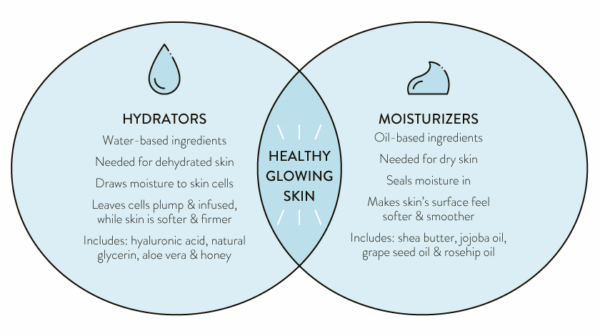
Pictured: Hydrators and Moisturizers Ven Diagram Source: Xtend Life
The Importance of Moisturizing
Moisturizing is a key step in any skincare routine. Here are five reasons why moistuzing your skin is so important:
- Moisturizing can help your skin repair itself. The most sensitive areas of your skin, like the face, ears, and neck, replace themselves more often than any other area on your skin, which leaves these areas vulnerable to dryness and the elements. Moisturizing can help give your skin the boost it needs to repair itself and stay healthy.13
- Moisturizing can help keep acne at bay. While excess oil is normally the culprit behind breakouts, dry skin can signal your skin to produce more oil, thus leading to acne. Moisturizing can stop your skin from overcompensating with sebum, which in turn can keep acne at bay.14
- Moisturizing can give you a smooth base for applying makeup. Moisturizing a few minutes before you apply your makeup can give you a smoother surface to work with, resulting in a more even complexion.15
- Moisturizing can slow down the signs of skin aging. Properly moisturizing your skin can keep it from developing pre-mature lines and wrinkles. Plus, it can can help minimize the appearance of wrinkles that are already present. A study published in the British Journal of Dermatology found that subjects who used moisturizer developed wrinkles much slower than those who didn’t.16
The Humanist Beauty Herban Wisdom® Facial Oil and Eye Cream

The Humanist Beauty Herban Wisdom® Facial Oil and Eye Cream are powerful, moisturizing skin treatments that fuse together the power of humectants, emollients, and sealants to keep your skin healthy and ready to take on the day.
You can shop the Humanist Beauty Herban Wisdom® Facial Oil and Eye Cream here.
References:
https://www.ncbi.nlm.nih.gov/pmc/articles/PMC2843412/ [3][4]
https://www.medicalnewstoday.com/articles/hydration-vs-moisture [7][8]
https://www.nhs.uk/conditions/emollients/ [10]
https://www.ncbi.nlm.nih.gov/books/NBK536416/ [11]
https://www.healthline.com/health/beauty-skin-care/dry-vs-dehydrated [12]
https://www.vogue.in/beauty/content/winter-skincare-diet-tips-to-hydrate-your-skin-from-within [13]
https://www.glowday.com/blog/the-importance-of-moisturiser-in-the-ageing-process [16]


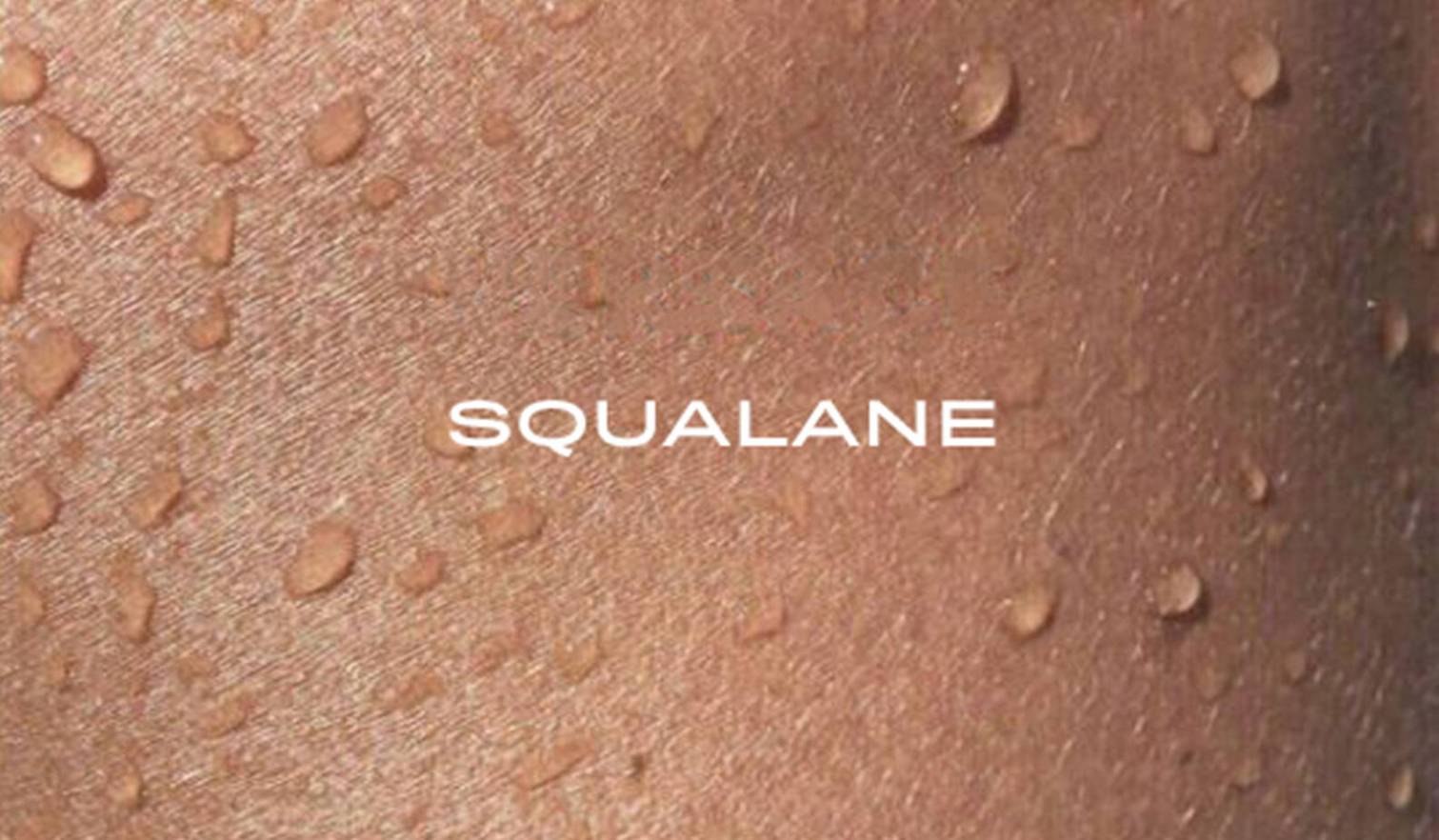
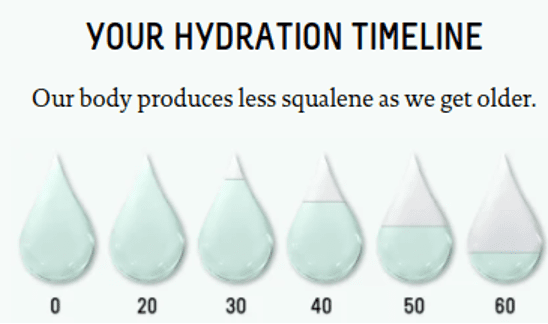
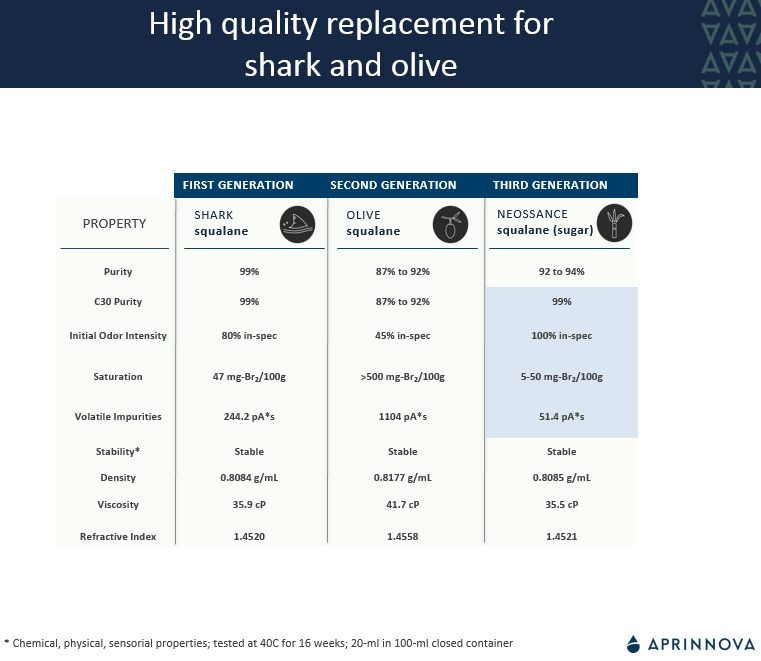 Aprinnova and Neossance Squalane Clinical Studies
Aprinnova and Neossance Squalane Clinical Studies